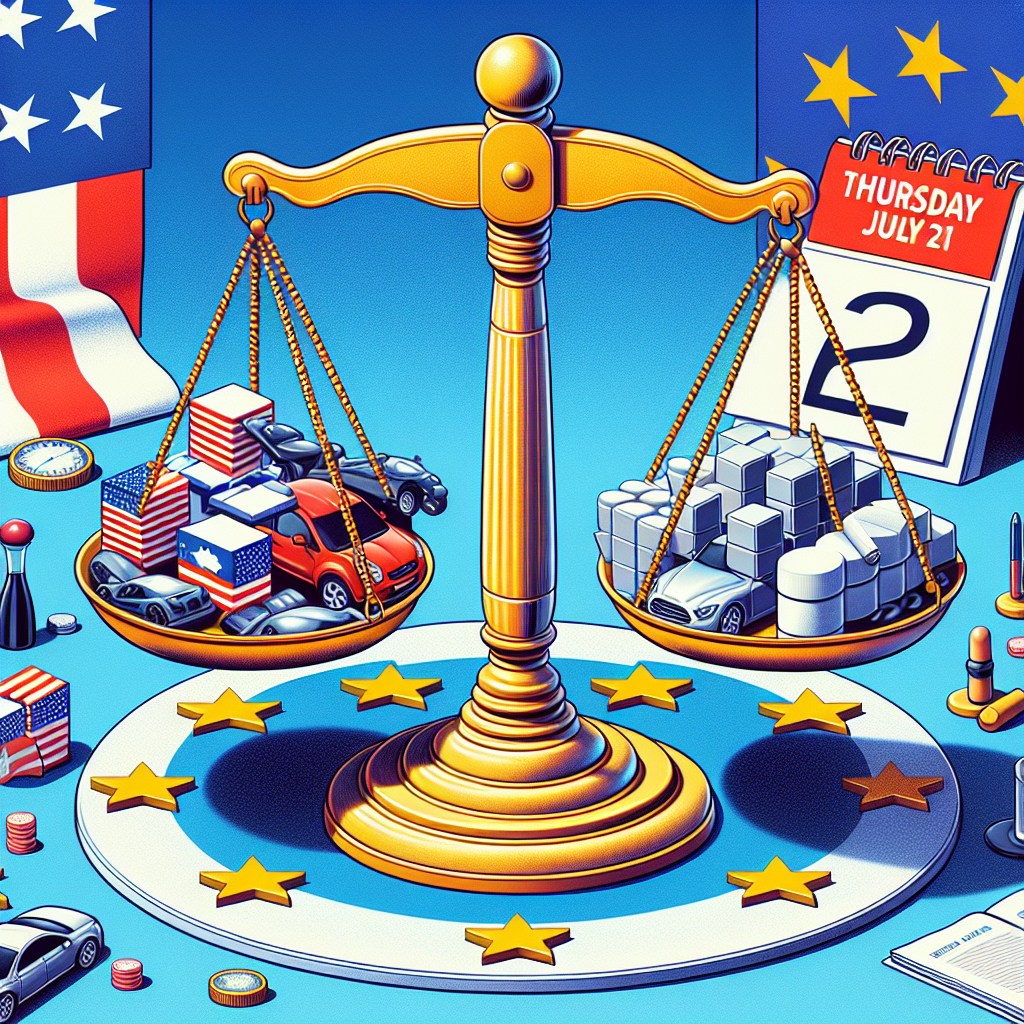On Thursday, July 21, the United States and the European Union finally released a long-awaited joint statement, officially announcing a trade framework agreement that confirms tariffs on European cars, chips, and pharmaceuticals entering the U.S. market. At the same time, the EU will provide favorable market access for certain U.S. products.
Following a summit between the top leaders at the end of July, the agreement was announced, with the joint statement being released nearly a month later. The EU described this as the first step and hopes to secure more tariff exemptions in the future.
The statement reads, “The United States and the European Union hope this framework agreement will serve as a starting point, expanding over time to cover more areas, improving market access, and deepening trade and investment relations between the two sides.”
Key points of the statement include the U.S. commitment to apply the most-favored-nation tariff rate or a 15% tariff rate (whichever is higher) to goods originating from the EU. This tariff does not apply to specific U.S. industry tariffs.
Starting from September 1, the U.S. will impose most-favored-nation tariffs on several goods from the EU, including certain natural resources (such as cork), all aircraft and their components, generic drugs and their ingredients, and chemical precursors receiving special treatment.
The statement also mentions that the EU plans to provide preferential market access for seafood and non-sensitive agricultural products imported from the U.S. These products include nuts, certain dairy products, fresh and processed fruits and vegetables, processed foods, seeds, soybean oil, as well as pork and bison meat. The EU also aims to significantly increase its procurement of military and defense equipment from the U.S.
According to the agreement, the EU has pledged to purchase $750 billion worth of U.S. energy and invest an additional $600 billion in the U.S.
As per the statement, the U.S. will impose a 15% tariff on most goods from the EU, including chips and pharmaceuticals.
It is noted that the tariff rate for pharmaceuticals will not stack with any other tariffs applied to EU products within the U.S. This provides a certain level of protection for the EU, ensuring they do not face higher or additional tariff burdens. Even if the U.S. decides to increase tariffs following the completion of the 232 investigation, the U.S. will maintain a maximum 15% tariff rate on EU pharmaceuticals.
The Trump administration initiated a “232 inquiry” on pharmaceuticals in April to review the impact of imports on national security. In recent weeks, Trump has warned of imposing tariffs as high as 250% on the pharmaceutical industry and issued ultimatums to major companies to lower drug prices in the U.S.
However, French wines and spirits have not received tariff exemptions from the U.S.
An agreement has not been reached on steel and aluminum products, with EU exports still subject to a 50% tariff rate. Steel and aluminum tariffs fall under specific industry tariffs.
The U.S. will maintain the existing 27.5% tariff on EU cars. The statement indicates that the reduction of tariffs on EU cars will be implemented in sync with the EU starting its process for reducing tariffs on U.S. products.
Both parties have agreed to impose a conditional 15% tariff on European cars and car parts exported to the U.S., contingent upon the EU enacting legislation to lower its industrial tariffs.
EU Trade Commissioner Maroš Šefčovič stated that the Commission would submit legislative proposals and initiate relevant procedures by the end of August. He added that if this is the case, the 15% tariff rate will be effective retroactively from August 1.
The statement indicates that both parties “intend” to address global challenges in the industry, such as overcapacity, and strive to “establish secure supply chains between each other, including through tariff rate quota solutions for EU exports of steel, aluminum, and their derivatives.”
Šefčovič emphasized that he had engaged in 100 hours of negotiations with his U.S. counterparts over the past two months, reaffirming that this is the most favorable trade agreement that the U.S. has offered to all its partners.
He mentioned that the framework agreement is a “first step” towards strengthening economic ties between the two sides, bringing stability and predictability to their relationship, crucial matters, and their businesses.
“It also reinforces our broader transatlantic partnership, which is more important than ever in today’s complex geopolitical landscape,” he added.
European Commission President von der Leyen and European Council President Antonio Costa both welcomed the joint statement, emphasizing the predictability and stability it offers.
A European diplomat mentioned that earlier on Thursday morning, EU ambassadors were briefed by the commissioner on the content of the joint statement, with most ambassadors expressing positive reactions.

